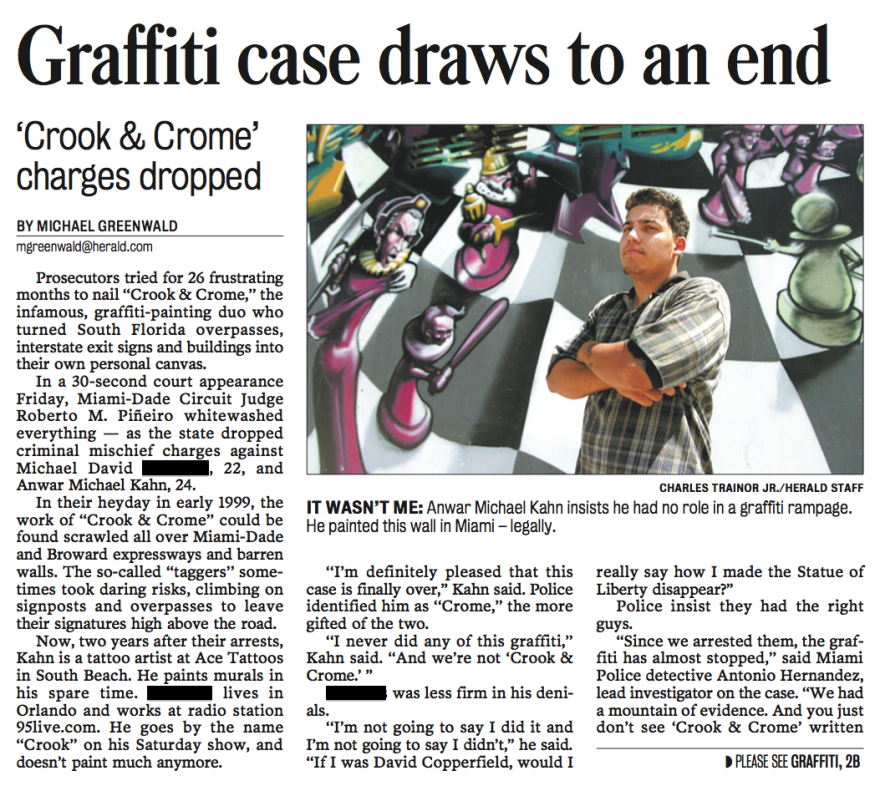South Florida’s graffiti problem in the 1990’s had a poster child: Crook and Crome.
They had tags in Miami-Dade, Broward and Palm Beach counties.
Graffiti was a regular issue at commission meetings and town hall meetings. Graffiti on the highways prompted the Florida Department of Transportation to set aside a budget of over $130,000 to clean up tags on highway signs. There was also a hotline to report anyone seen doing graffiti.
Then, came Crook and Crome.
They started hanging out after meeting at a warehouse in Carol City. Crook and Crome became friends and later roommates. They decided to tag everything they could, occasionally painting large murals. And people took notice.
Not knowing, at first, that the tag belonged to two people, news reports asked, “Who is this graffiti artist defacing everything in his or her path?”
The State Attorney’s Office in Miami-Dade began asking the same question.
This video is a digest of the local television coverage of the exploits and arrest of graffiti artists Crook and Crome.
http://youtu.be/A1OURNelnk4
TAGGING THE WALL
At the height of their infamy, Crome comes up with a plan to do a really big piece right off I-95 near 24th Street at a wall where an old RC Cola factory used to be.
“This is the wall everybody sees off the highway,” says Crook. “This is the wall.”
On a bright Sunday afternoon in 1999, they dress up like painters with rollers and paintbrushes, and start whitewashing the wall.
“Cops think ‘illegal’ with spray cans. They don’t think ‘illegal’ with rollers and paintbrushes,” says Crome, whose name is Anwar.
They even had with them a sign with the name of a real estate company from around the corner. If any cops asked questions, they could say they were doing it for the company.
To be even safer, Crome and Crook painted the letters in reverse order so that nobody could tell what it was spelling out until the very end.
“And once it was finished, I was like scared of the wall,” says Crook, whose name is Mike.
Mike asked not to have his last name published because he does not want to compromise his business by discussing past criminal activity.

THE ARREST
Less than two weeks later, the cops showed up at Crook and Crome’s apartment and arrested Crook while Crome was out with some friends.
The State Attorney’s Office asked a judge to set Crook’s bond at $1 million – just about the highest bond ever requested in a graffiti case.
The judge denied that request and set bond at $50,000 for Crook.

Later that year the case was dropped because police didn’t have a warrant when they searched Crook and Crome’s apartment.
Graffiti on the highways slowed down after Crook’s arrest. The message was clear after that: tag the highways and you may have a $1 million bond on your head.
“In the end, we won,” says Stephen Talpins, the lead prosecutor in the Crook and Crome case.

MODERN DAY
Today, Crook is a graphic designer. Crome is in jail on a drug charge.
Today, you won’t see much graffiti on I-95 or other highways. You’ll see plenty of street art in South Florida, especially in a place like Wynwood.
And no one needs a disguise to do it.












